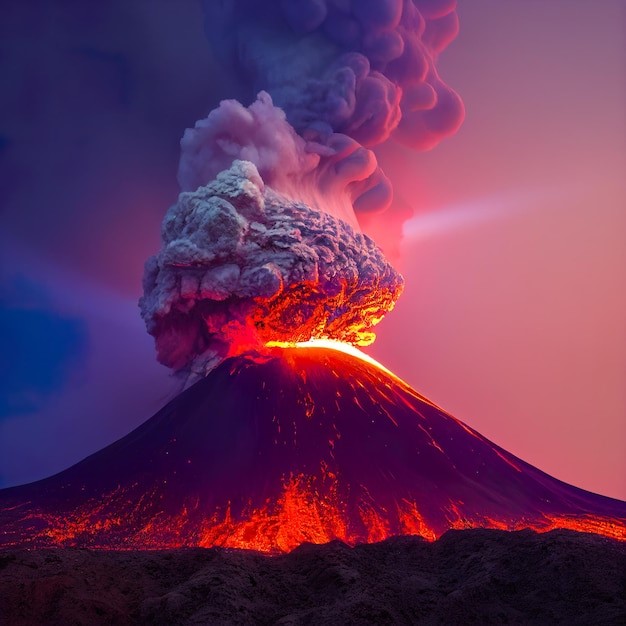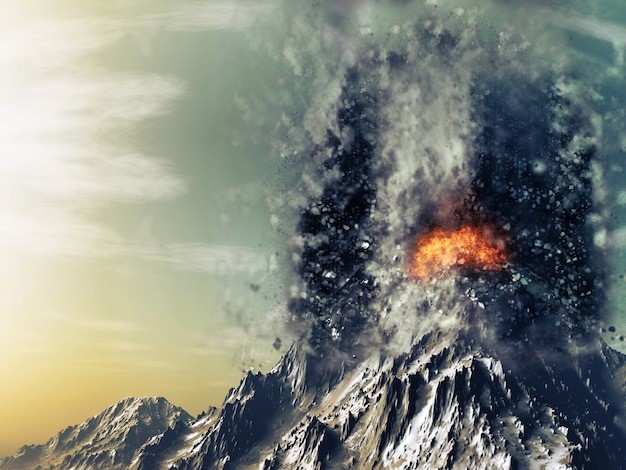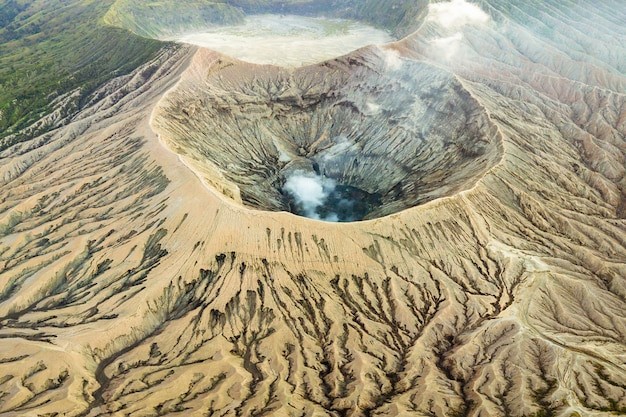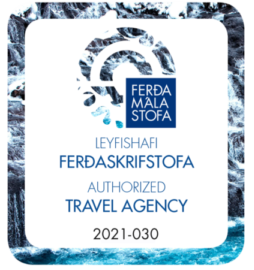Welcome to Iceland, a land of mesmerizing contrasts where fire meets ice. This Nordic island nation is known not only for its breathtaking landscapes but also for its volcanic activity. Iceland sits on the Mid-Atlantic Ridge, where the North American and Eurasian tectonic plates pull apart, creating a unique geological hotspot.
This natural phenomenon has given birth to several active volcanoes in Iceland, making Iceland a playground for adventure seekers and a haven for scientific research.

Geological Background of Active Volcanoes in Iceland
Iceland’s volcanic prowess is deeply rooted in its location on the Mid-Atlantic Ridge. This underwater mountain range stretches across the Atlantic Ocean floor, separating the two tectonic plates.
As they drift apart, magma rises from the Earth’s mantle, causing volcanic eruptions and shaping the island’s rugged terrain. The volcanic hotspot beneath Iceland ensures a steady stream of geological activity, making it one of Earth’s most active volcanic regions.
Importance of Active Volcanoes in Iceland

Studying active volcanoes in Iceland is crucial for scientific research and offers practical benefits. The geothermal energy harnessed from these volcanoes provides heating and electricity for many Icelandic homes.
Additionally, the fiery eruptions have created awe-inspiring natural landmarks that draw tourists from around the globe, boosting Iceland’s tourism industry and offering a glimpse into the planet’s raw power.
Top Active Volcanoes in Iceland
1. LITLI-HRÚTUR
- Location: Nestled in the remote Northeast region of Iceland, Litli-Hrútur is a hidden gem accessible through scenic hiking trails. The solitude of this volcanic wonder makes it a favorite among nature enthusiasts seeking a more off-the-beaten-path experience.
- Recent Eruptions: Litli-Hrútur experiences frequent but relatively small eruptions every few years. These eruptions often result in lava flows and minor volcanic explosions, creating awe-inspiring fields and picturesque glowing crater vents.
- Distinctive Features: One of the most striking features of Litli-Hrútur is the dramatic contrast between the dark, barren lava fields and the vibrant green moss that begins to reclaim the landscape after each eruption. The volcanic vents, glowing with an otherworldly hue, offer a surreal sight during the darker hours of the day.
2. Hekla Volcano
- Location: Towering over Southern Iceland, Hekla is one of the country’s most famous volcanoes. Its proximity to the capital city, Reykjavík, and its frequent eruptions throughout history have earned it the nickname “Gateway to Hell.”
- Recent Eruptions: Hekla’s last significant eruption occurred in 2000, producing ash plumes that disrupted European air travel. The volcano, known for its unpredictability, keeps scientists and locals on their toes, anticipating its next eruption.
- Distinctive Features: Hekla boasts a diverse landscape, including vast lava fields and imposing cliffs. The surrounding area is a hiker’s paradise, with trails leading to the summit for those seeking a challenging yet rewarding adventure. On clear days, the panoramic views from the peak are nothing short of breathtaking.
3. Katla Volcano
- Location: Hidden beneath the Mýrdalsjökull glacier in Southern Iceland, Katla is one of Iceland’s largest and most active subglacial volcanoes.
- Recent Eruptions: Katla’s last significant eruption occurred in 1918, but it is considered overdue for another major eruption. Scientists closely monitor the volcano for any signs of activity, as an eruption could have significant consequences for the region and even global climate.
- Distinctive Features: The combination of fire and ice is evident in Katla’s landscape, where glacial ice conceals the mighty volcano beneath. When not covered by ice, the caldera reveals a rugged and awe-inspiring terrain. Surrounding the volcano, the Mýrdalsjökull glacier offers opportunities for ice climbing and glacier trekking, making it a thrilling experience for adventure seekers.
4. Eyjafjallajökull Volcano
- Location: Situated in Southern Iceland, Eyjafjallajökull gained international attention during its eruption in 2010.
- Recent Eruptions: The 2010 eruption of Eyjafjallajökull caused widespread disruption to air travel, affecting millions of passengers across Europe. Since then, the volcano has remained relatively dormant.
- Distinctive Features: Eyjafjallajökull’s eruption in 2010 created a massive ash cloud that reached high into the atmosphere, posing a challenge for aviation. The volcano’s unique name, often referred to as “E15” for simplicity, is derived from the surrounding glacier “jökull” and the term “fjalla,” meaning mountain. This icy giant’s captivating beauty contrasts with its potential for fiery outbursts.
4. Grímsvötn Volcano
- Location: Hidden beneath the Vatnajökull glacier, Europe’s largest ice cap, Grímsvötn resides in the southeast of Iceland.
- Recent Eruptions: One of Iceland’s most active volcanoes, Grímsvötn, erupted most recently in 2011, generating substantial ash clouds and glacial floods.
- Distinctive Features: The subglacial nature of Grímsvötn’s eruptions creates spectacular meltwater rivers, known as jökulhlaups, which surge through the glacier. The combination of erupting fire and glacial meltwater is a sight that has to be experienced to be fully appreciated.
5. Askja Volcano
- Location: Situated in the remote Central Highlands, Askja is a vast volcanic caldera surrounded by an otherworldly landscape.
- Recent Eruptions: The most significant historical eruption occurred in 1875 when the Öskjuvatn crater lake was formed. Since then, Askja has seen smaller eruptions and periods of volcanic unrest.
- Distinctive Features: Askja’s enormous caldera showcases an eerily beautiful moonscape, contrasting sharply with the surrounding lush highland wilderness. The area is also home to other geological wonders, including the strikingly blue, geothermal Víti crater lake. It is where visitors can bathe in its warm waters.
6. BLÁHNÚKUR
- Location: Part of the Lakagígar volcanic system in Southern Iceland, BLÁHNÚKUR is a lesser-known volcano awaiting discovery by adventurous travelers.
- Recent Eruptions: BLÁHNÚKUR was a part of the massive Laki eruption between 1783 and 1784, which had catastrophic consequences for Iceland and Europe.
- Distinctive Features: Standing tall with its distinct blue and black hues, BLÁHNÚKUR showcases the striking colors characteristic of the Lakagígar system.
- The area around BLÁHNÚKUR is an otherworldly landscape of moss-covered lava fields and intriguing geological formations, offering a unique and visually captivating experience.
Exploring the top active volcanoes in Iceland is an unforgettable journey through a landscape shaped by the raw forces of nature.
As you immerse yourself in the fiery beauty of these volcanoes, always remember to approach with respect and caution, cherishing the opportunity to witness the breathtaking marvels of Iceland’s geological wonders.
Eruption History of Active Volcanoes in Iceland

Active volcanoes in Iceland have profoundly impacted the island’s history, environment, and communities. One of the most significant eruptions was the 1783-1784 Laki eruption. It caused widespread crop failures, famine, and environmental consequences in Europe. Additionally, eruptions such as the infamous Eyjafjallajökull eruption in 2010 disrupted global air travel. They highlighted the potential risks posed by volcanic activity.
Safety Measures and Preparedness
Visiting or living near active volcanoes comes with inherent risks. Icelandic authorities take volcanic safety seriously and have a comprehensive volcano monitoring system.
In case of potential eruptions, they have well-planned emergency procedures and evacuation strategies to ensure the safety of residents and visitors alike. It is crucial to stay informed about the latest updates from local authorities when visiting volcanic areas.
Tips for Visiting Active Volcanoes in Iceland
Safety should always be a top priority for those who wish to experience the fiery beauty of active volcanoes in Iceland. Consider joining guided tours led by experienced operators who understand the terrain and potential risks. Admire these geological wonders from safe viewpoints and avoid venturing into restricted areas.
Conclusion
Active volcanoes in Iceland are a fascinating spectacle and a reminder of the planet’s ever-changing nature. Embrace the fiery adventure responsibly, and you’ll be rewarded with an experience few places on Earth can offer. Witness the powerful forces that shape our planet and marvel at the natural wonders that define Iceland as the land of fire and ice.

